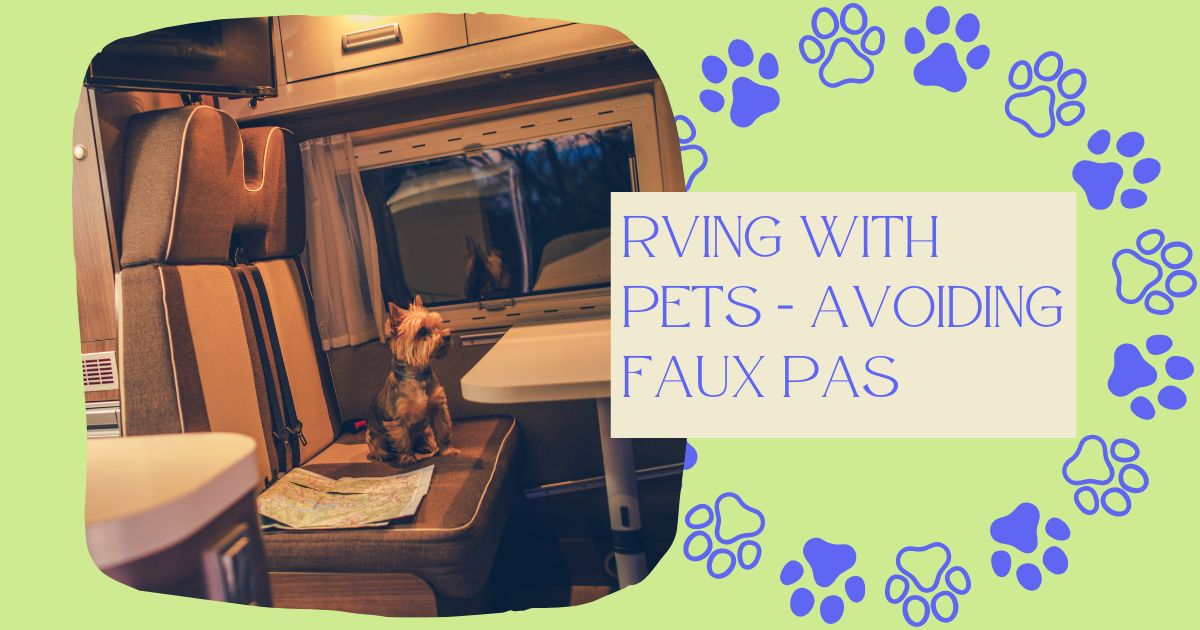RV Travel With Pets
Thinking of taking your pet along with you for an RV pet travel adventure? As long as you plan carefully, pack keeping your pet’s needs in mind, and introduce them to their new mobile home correctly, RVing with pets is easy. In fact, following some of our quick tips and hack will get you on the road in no time at all, enjoying all the benefits of RVing with pets!
Top Tips for RVing With Pets
RV travel with pets can be very fulfilling if you know how to set the trip up so that your furry friends are actually enjoying the trip along with you.
Remember that pets cannot process the fact that they are going for a drive that will eventually end at a pre-set destination. The first few times riding in an RV can be stressful for them, and even when they get accustomed, you should ensure that you provide adequate conditions to make the trip comfortable for them.
Preparation is key here. Just as you’re preparing a route, checkpoint stops, provisions, etc. for yourself on the trip, you should pre-plan certain aspects of life on the road for your pets as well.
To that extent, let’s take a look at some helpful tips that will make RVing with pets an enjoyable experience for everyone involved:
Pet Comfort Tips
Make sure your stops are pet friendly
Whether on the road for a vacation or dedicated to RVing part-time or even full-time, you must make frequent stops when RVing with pets. It is important to pick rest areas and campgrounds that are pet friendly.
Most rest areas and campgrounds are open to pets. However, some might have certain restrictions as to areas that are off limits to pets or perhaps restrictions in terms of the size or breed of your pet.
Some campgrounds are so inclined towards pets that they include fenced-in areas where your pets can run around leash-free. These are obvious top-of-the-list choices whenever available. Read our article and find out Our Favorite Dog-Friendly Campgrounds in Maine.
Many national parks also have specific rules regarding only allowing pets in the visitor areas and parking lots, but not on the trails. When doing your research, make sure you do your due diligence if you intend to visit one of these spots.
Researching your camping spots thoroughly beforehand might save you and your pet many headaches.
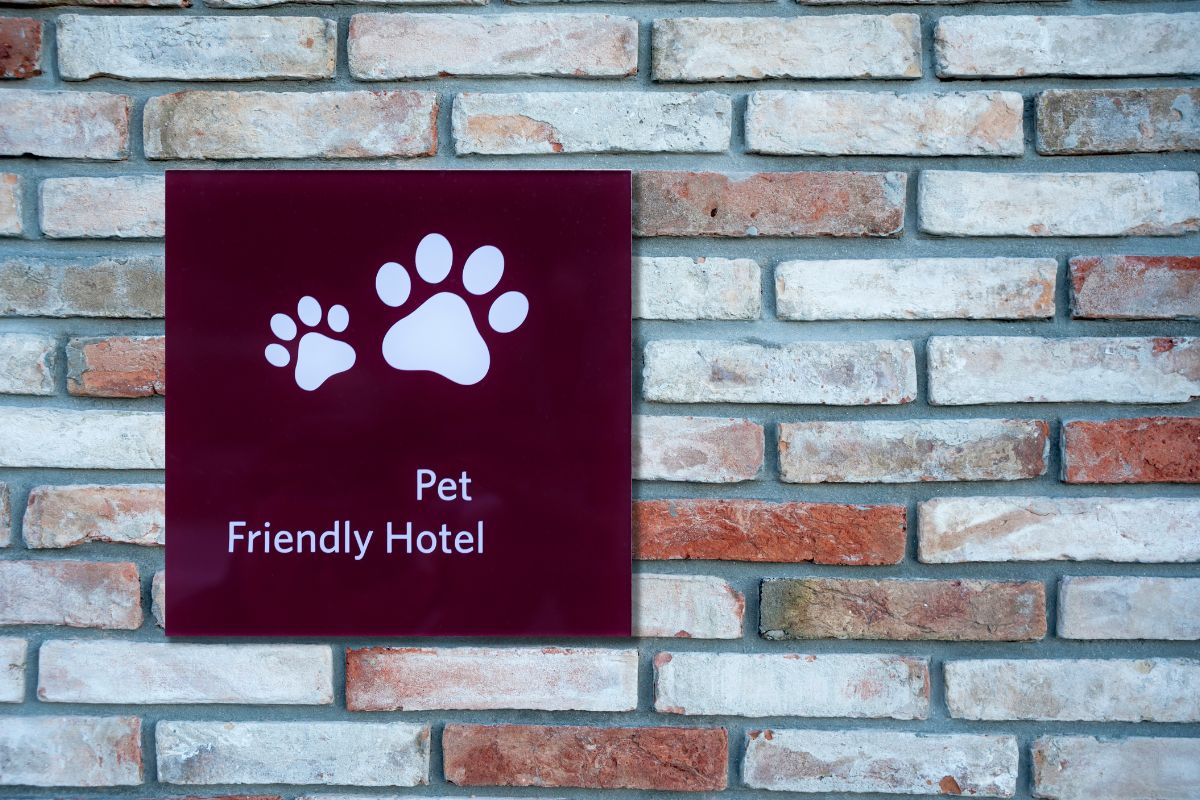
Schedule rests for exercise and mental stimulus
In terms of rest stops, the veterinary recommendations for breaks when traveling with pets are to stop every 2 to 4 hours for 15 to 30 minutes. The stops should provide the pet with some exercise time which usually requires space and, as such, is another thing to consider when picking your checkpoints.
Apart from letting your pet answer the call of nature and run around a bit, you should also show them some dedicated attention (i.e., play games, make challenges for them, etc.) that will engage them mentally.
Tiring a pet out both physically and mentally during rest stops makes them a great travel companion.
Consider the weather
During RV travel with pets, you should note what types of weather you expect to encounter on the road. Pets are quite reactive to weather, which in combination with the exertions of traveling, can impact their well-being.
If you’re going to be on the road for a long time and you’re going to pass through areas that greatly differ in weather, make sure you pack everything that your pet will require to feel comfortable upon exiting the RV.
Knowing what type of heat and humidity awaits also lets you adjust the climate control inside the RV as you’re nearing your destination so that your pets are not shocked when they exit.
Leaving the Pets In/Around the RV
While the entire point of going on the road with your pet(s) is to spend as much time as possible with them, the truth is that you will need to leave them alone for a while at certain points. This is another aspect of pet travel you should pre-plan for.
Climate control
It goes without saying that your RV should have a climate control system that can create the optimal environment for your pet. At certain points in time, you will need to leave your pet inside the RV on its own, and you must ensure the temperature inside is adequate for them.
Pet temperature monitors
Pet temperature monitors are devices you can easily install to monitor the internal temperature of your RV.
These monitors work by way of using 4G cellular data to send you notifications (via the app, text, and e-mail) if there are significant changes in the temperature and humidity that might cause potentially unsafe conditions for your pet.
Foldable enclosures
Foldable fences and perhaps crates are definitely things you should consider when RVing with pets. Of course, both are very dependent on pet size, but they can come in very handy in certain situations.
Whenever the space is available and the weather permits it, you can leave your pet outside by erecting a quick enclosure from foldable fences. This allows the pet to scratch its legs while enjoying itself outdoors.
Foldable/collapsible crates might not be the best way to leave a pet inside an RV alone, but if the pet tends to steal food and/or damage things when left alone, it may be necessary.
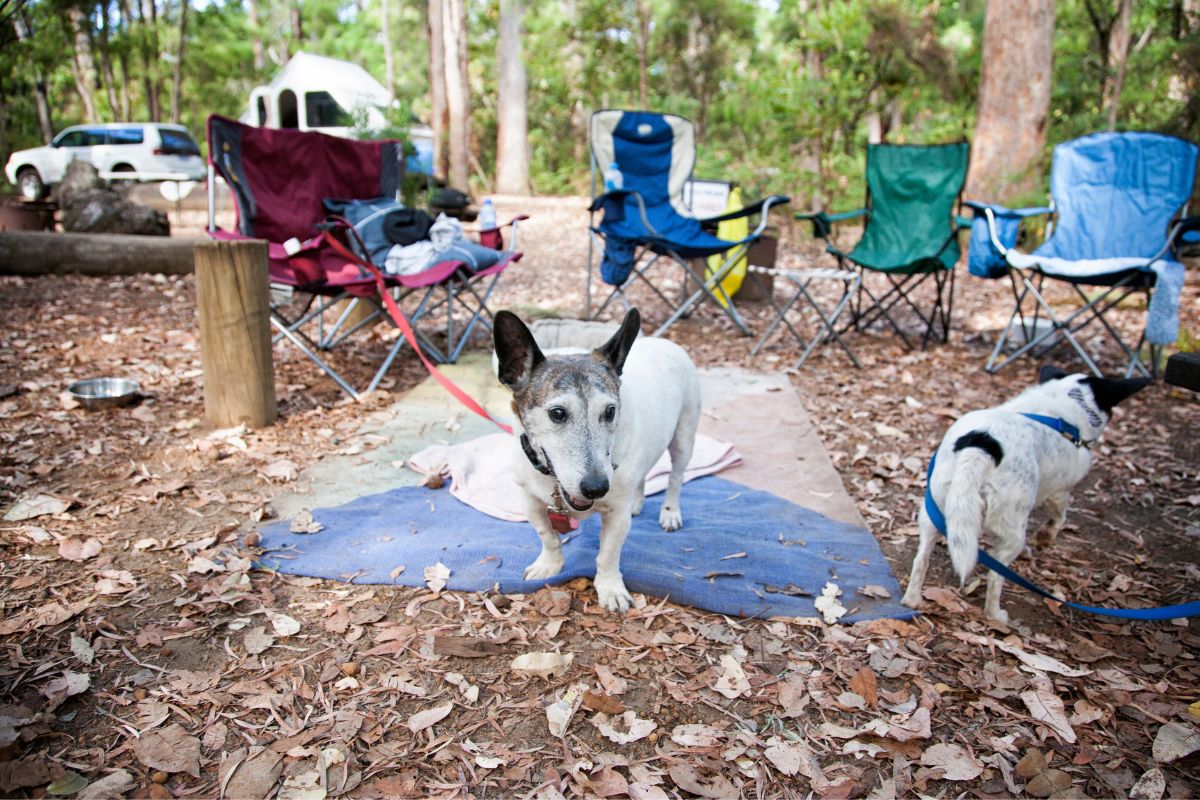
Creating a Stress-Free Travel Environment
Pets are very adaptable and quickly get used to daily travel in an RV. Dogs tend to find traveling in motor vehicles more enjoyable when compared to cats, but at the end of the day, with any pet, it is all about making the drive time as stress-free and enjoyable as possible.
Their dedicated space
First of all, make sure that the pet rides with you, and not in the back, for safety reasons. The spot you choose for your pet might differ depending on the type of RV, but the bottom line is that it is not safe for people and pets alike to travel in the back of RVs.
That said, a spot the pet will claim as its own, like a seat, crate, or even a sofa. Just like at home, it should represent a place of safety for the pet, and it will mitigate the stress of repeated travel that is certain to arise in pets during the early phases of your trip.
There are pet buckles available that will further ensure the safety of your pet while driving.
Driving speed
Animals do not enjoy driving nearly as much as we do, given that they do not understand the concept of entering a vehicle to get from one specific point to another. As such, it is an environment that is stressful to them regardless of the type of vehicle they are in.
Spill-proof water bowl
As a veterinarian, if I had to pick one thing as the most important aspect of having pets traveling long distances with you, it would be hydration. Regular stops are not always enough to ensure proper hydration for your pet.
The solution comes in the form of a spill-proof water bowl. It is a bowl designed to only allow a small amount of water to be directly accessible and has a rim that stops it from spilling. As the amount of water available runs out, the bowl refills itself, allowing constant access to water for your pet.
Health-Related Tips
One thing that is just as important as the comfort and safety of your pet in an RV is their health status. Before embarking on any long-distance drives with a pet, you should ensure the following:
Test drives and introduction to RV life
If you think you can just pick your pet up, put it in an RV, and take off, you’re sorely mistaken. That is a massive stress event for any pet, and it can result in a whole host of health issues.
As part of planning your tip, you have to make sure that, first and foremost, your pet is familiar with the RV. This means letting them enter it while it is standstill and even letting them spend a night in it without driving.
Then, you need to make sure you do several short test drives to allow the pet to get accustomed to the movement of their new home.
Flea and tick collars
Tick and flea collars are an absolute necessity when you’re doing long-term traveling. Getting the one that you prefer on the road might turn out to be a hassle sometimes, so stocking up with enough of those to last you for the better part of the trip is always a good idea.
Remember, your pets will bring all fleas and ticks back to the RV, which is where you are living as well, in very close quarters with your pet.
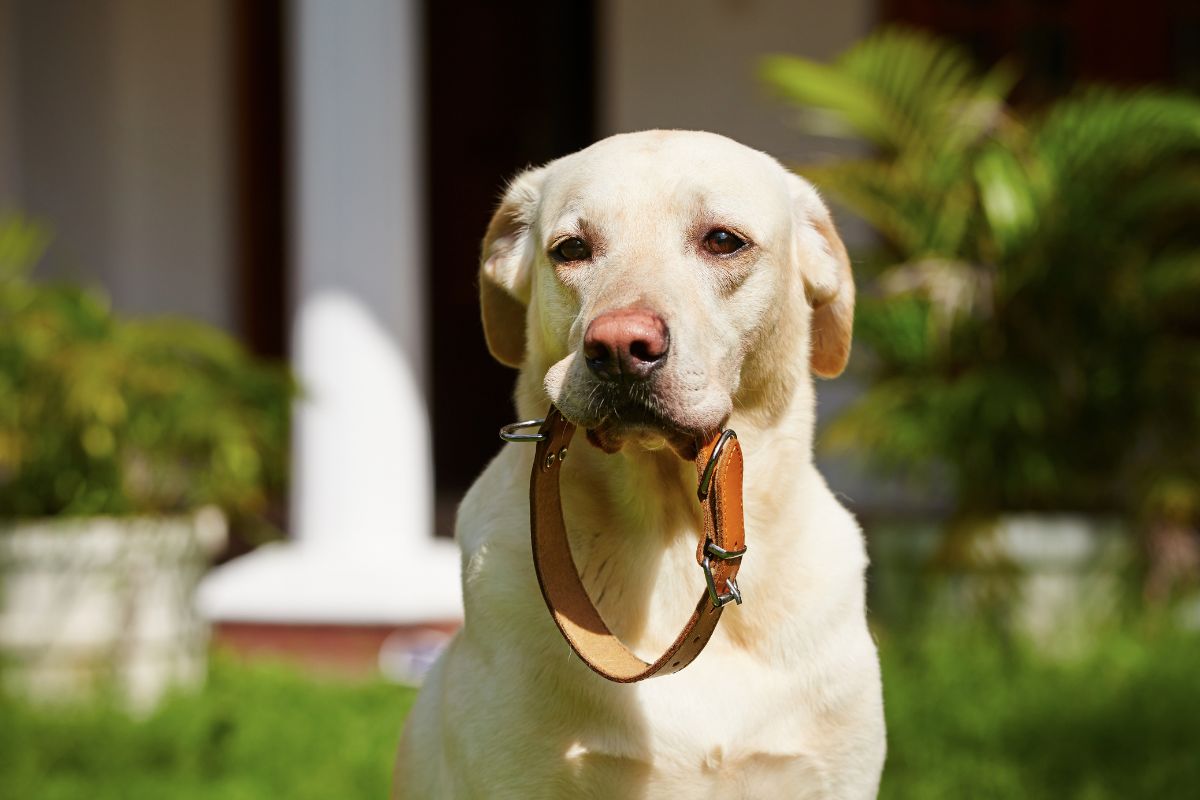
Drugs for sickness
While your pet might not get motion sickness or anxiety, it is always a good idea to have drugs that help with these two conditions on hand. They will save you a trip to the vet and provide your pet with a more comfortable ride.
Veterinary info for emergencies
A crucial aspect of your planning includes getting information on veterinary practitioners near every campground you pick. It is better to have them and not need them than vice versa.
A nationwide veterinary network such as VCA is a great resource to help you locate thousands of emergency veterinarians and hospitals in 46 states.
Certificates and Documents
While pet RV travel around the US and Canada is pretty hassle-free regarding documents and certificates, there are a few you definitely need to keep handy.
Vaccination certificate
A certificate with all current vaccinations is actually mandatory to have with you at all times while traveling with a pet.
The most important thing is to have proof of a current rabies shot. Its administration is yearly, and if you are on the road for more than a year, you need to plan for booster shots.
Health certificate for travel
A veterinary health certificate is a must but is something you will seldom need to produce. Most people travel across the US and even into Canada and back without one, but if you want to be a stickler for rules and regulations, you can get one at a veterinarian of choice before embarking on the trip.
Proof of ownership
Proof of ownership can be handy in a bunch of different situations and is something that I recommend you keep close at all times.
Photos
Last but not least, having photos of your pet might end up helping you retrieve it in the unfortunate case that it gets lost during one of the stops.
FAQs on RV Travel With Pets
While there are plenty of questions regarding RV travel with pets, especially if it is your first time doing it, we focus on answering several ones that are the most frequent and important to know.
Can I Leave my Dog or Cat Unattended in an RV at a Campground?
Yes, you can certainly leave your pet unattended in your RV. As previously mentioned, you can leave them inside the RV or outdoors in an enclosure made out of a folding fence.
It is not, however, a good idea to spend a lot of time away from your pet, particularly dogs. They tend to display separation anxiety quite a lot, and while it varies individually from dog to dog, it can get worse when coupled with travel stress and an unknown environment at stops.
The bottom line is that you can leave your pets, but make sure to be absent for the shortest amount of time possible and to give them plenty of love and attention once you’re back!
How Can I Find Dog-Friendly RV Parks Near Me?
Most RV parks are pet friendly, but just to make sure, you can easily use an online database to check the rules.
Some of the best options are:
- Bring Fido (Worldwide)
- Dog Trekker (California)
- Go pet-friendly (USA)
- Dog friendly (Worldwide)
What Should I Do if My Pet Gets Carsick?
Not all animals display motion sickness, but they might develop it over time. The symptoms include excessive drooling, general uneasiness, frequent yawning, and constant whining. Whenever you notice these, you will need to react.
The best thing to do is stop as soon as possible and give your pet time to rest. This, however, is not always an option.
In instances when you can’t stop, rolling the windows down and slowing down your driving speed will go a long way in easing your pet’s discomfort.
If you know that your pet is prone to motion sickness, you should get prepared. In fact, pre-packing motion sickness medicine is a must when you’re RVing with pets. One trick is using peppermint traits to calm your pet down.
However, sometimes you’ll have to turn to medication to make your pet comfortable. Benadryl is safe to use in dogs and is something you might already have on hand. One milligram per pound is the dose you’re after with dogs.
Of course, veterinary drugs for just such an occasion are the best choice, so if you see that a pet repeatedly presents motion sickness symptoms, make sure to stop and consult a veterinary professional.
Is There a Way to Eliminate the Smell of Cat Litter?–
This is one issue that is hard to solve completely. Cats tend to flick the litter around once they’ve “done their business.” Since any litter will start to smell after a while, you can understand how this can quickly become uncomfortable.
There are odorless kitty litter options out there, but eventually, it comes down to changing it regularly. Having a handheld vacuum cleaner will go a long way in helping you quickly deal with anything your pet cat flicks around the RV.
Can I Travel With Smaller Animals?
The answer is that you can, but it will take some work to ensure their enclosure is safely inside the RV; in the cases of birds, rabbits, hedgehogs, and guinea pigs, this is not too difficult to figure out.
If you want to take lizards or fish with you, though, you’ll have to think about heat lamps, water purifiers, and similar gadgets that might end up being a nuisance to you in terms of raising the heat in the RV or emitting continuous sounds.
After all, the best pets for RV living are the ones you pick.
What to Pack for Pet RV Trips
RV travel with pets requires you to pack certain accessories that you wouldn’t usually bring. While some are very obvious, keep in mind that there are cool hacks that turn everyday pet life objects into RV-friendly ones.
Universal Packing Essentials for RVing with pets
The following items are essential for traveling with any pet, whether it’s a dog, cat, critter, or lizard.
Food and Water
Obviously, we know, but there are a few intricacies to packing your pet’s food and water optimally.
First of all, you need to think about the amount you will need in between stops and where you can/can’t resupply. This is an essential part of the trip planning, particularly regarding water.
Air-tight food containers will make your life easier, as they are practical to use and remove the danger of spills compared to open bags. Obviously, dehydrated food is the most practical choice here, along with ample amounts of your pet’s treats, of course.
Collapsible food bowls will help you save space and are easy to keep clean.
The spill-proof water bowl is another great amenity to ensure hassle-free pet RV adventures.
Medkit
A first aid kit for your pet is just as important as the one you have for yourself and your human companions. In fact, there are only subtle differences in what your pet’s first aid kit should contain.
A solid pet medkit contains wound care equipment, any medications your pet might need (always pack motion sickness and anti-anxiety meds), as well as some general emergency items like flashlights, nail clippers, emergency blanket, digital thermometer, tweezers, tick removers, etc.
Pet Temperature Monitor
A pet temperature monitor is not essential, but it will make any activities you have to do without your pet a lot more enjoyable, given that you won’t have to worry about the temperature inside the RV.
Documents
You never know when you’ll need to pop by a vet or perhaps have to display some papers to authorities. The vaccination certificate, especially for rabies, is mandatory. A travel health certificate and perhaps proof of ownership are optional, but it is always better to have them with you.
Enclosures
Whenever possible, it is a great idea to have your pets outdoors. Foldable fences are your go-to for larger pets, like dogs, allowing ample space for your pet to move around leash-free.
Collapsable enclosures are great for smaller dog breeds, cats, and even critters. They are easy to set up and remove and easy to clean.
Crates/Kennels
Collapsible kennels for dogs and crates for cats and/or critters will allow you to both restrain your pet inside and outside of the RV while helping you save space anytime you are not using them.
Toys
Your pet will need every reminder of home while on the road, so taking their favorite toys along is not optional. Once again, there are collapsible toy beans available, but what is most important is to pick one with a strong lead, as you don’t want pet toys bouncing around your RV while you’re driving.
Bathing Gear
This one is more of a necessity in terms of dogs, but if you’re going to spend months on end in an RV, it becomes essential for most types of pets.
While your RV’s bathtub might do the trick, some dogs are just too big to fit in there, plus it will always be messy. An outdoor bathing tool is a great option as it easily connects to the RV’s water hookup and has all the necessary gadgets to quickly take care of your pet’s muddy misdemeanors.
LED Harness
If you’re planning to walk/hike during the nighttime with your pet, which you probably will while RVing with pets, having a LED harness is a good idea. If you are letting them go leash-free, it becomes a must.
Photos
Completely optional but might come in very handy. Yes, we all have a bunch of photos on our digital devices, but having a few hard copies around the RV won’t take up virtually any important space, and they might come in handier than you think.
Dog-Specific Packing
Hands-Free Leash (+ Extra Leash)
The one thing you absolutely must have with you always is a leach. A hands-free leash will allow you more comfort, making it easier to pick up after your dog, use the phone, or just enjoy a cup of Joe while on a morning walk.
Always plan to pack an extra leash, though, along with a harness/collar, as you never know when Murphy’s law is going to strike.
Grooming Kit
Optional and highly dependent on the breed of dog. For those breeds that can’t go long without grooming, a portable grooming kit will help you retain their preferred looks with relative ease.
Plus, you’re going to acquire a new skill by learning how to groom your four-legged best friend.
Waste Bags
These won’t be readily available at every stop, so you should make a point to pack more of them than you think you’ll need, just in case of smelly emergencies.
Of course, when re-stocking your RV at pre-planned locations, you’ll be able to also pick more waste bags up, so make sure they’re on your shopping list.
Cat-Specific Packing
Cat Carrier
A specialized cat carrier will help you take your pet around with ease. Most crates are easy to take apart when not used, helping you save space.
Of course, if you have one of those cats that behave when on a leash and harness, you might not need the carrier. I’d still recommend having one, though, just in case.
Litterbox
Obviously, the most crucial aspect of traveling with a pet cat. Whenever possible, go for an odor-blocking litter, but keep in mind that you will need to change it often. That means packing up ample amounts to last you comfortable in between checkpoints.
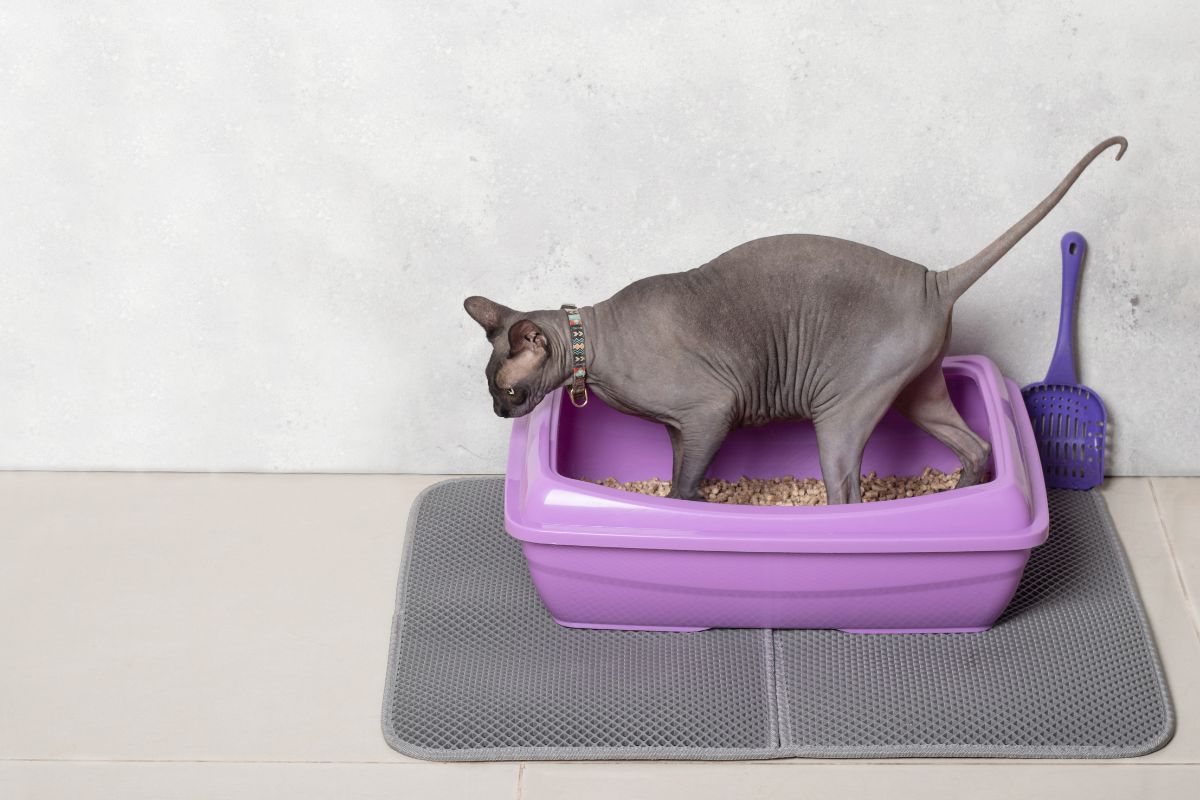
Litter Trap Mat
A true lifesaver for keeping your RV tidy when traveling with a cat. The mat easily keeps the litter box in place, and it also doubles as a dirt catcher when your cat inevitably decides to flick some of the litter box contents around.
Critter-Specific Packing
Critter Carrier
Taking your critter along for a walk or just letting them enjoy some fresh air is easy when you have a carrier box with you. They are collapsable and easy to store and clean.
Reptile-Specific Packing
Heat Lamp
Apart from making sure the enclosure is safely inside the RV, with some types of reptiles, you will need a heat source. These can sometimes break down, so you need to make sure you pack a backup heat lamp when traveling with a reptile.
The Benefits of RVing With Pets
The number one benefit that people who choose RV live quote is the freedom to live wherever they choose. That is also a benefit for your pets, as they spend more time outdoors, and even when inside, they still spend most of their time with you.
RV life allows your pet to enjoy a diverse landscape and discover and research new spots often, which happens to be something they thoroughly enjoy.
There are numerous mental and physical benefits for both pets and humans during RV travel with pets.
Studies have shown that there’s increased oxytocin (“love” hormone) secretion in both humans and pets when they spend extended periods of time together. This leads to less stress and better sleep, among other health benefits.
Spending time outdoors with your pet further helps secrete other “feel good” hormones, such as serotonin and dopamine, which contribute to better mental health.
The physical benefits of RVing with pets come via the walks you will take with your pet (in most cases, dogs). Dogs need to sniff around often, as it lowers their heart rate. Moreover, fresh air is good for the lungs, blood pressure, immune system, etc., for both you and your pet.
Introducing Pets to RV Life
The most important thing when planning to spend time RVing with pets is to gradually expose your pet to the RV life.
In fact, introducing your pet to the RV should happen in several distinct phases.
Phase 1 – This is Your New Home
Park the RV in your driveway/garage and create the pets’ corner inside. Bring in their bed, seat, toys, food and water, litter, and anything else essential for the trip. Let your pet get used to the RV by spending time inside and aligning with them throughout several days and maybe even a couple of weeks.
The goal is to spend a little more time every day until they start recognizing the environment as theirs. When your pets get comfortable sleeping inside the RV, you can start thinking about phase two.
Phase 2 – Let’s Go for a Ride
Once your pets are comfortable in the RV, it is time to take them for a ride. It will take a bit of time for them to get accustomed to the fact that their new home is a mobile one.
Driving around the block will quickly reveal whether your pets have motion sickness and/or anxiety, and it will help them get used to moving for most of the day.
Similar to introducing the pets to a parked RV, you want to make the trips longer and longer every day over several days.
Make sure you include breaks as well, preferably on locations unknown to your pets, so they get used to the fact that potty breaks and walks are part of the routine.
Phase 3 – Creating a Routine
Make sure you stick to a fairly rigid routine for the first few weeks of your travel. Stick to the recommended 15- to 30-minute breaks every 2 to 4 hours, and try to find campgrounds for most nights.
This way, your pets will get into a routine of driving in their new mobile home and knowing when potty breaks and exercise time comes, as well as get the night to rest without being in motion.
The bottom line is that most pets accept and adapt to living in an RV quite quickly. You just need to take your time and be patient in introducing them to the concept.
A Final Word
RVing with pets is a lot more fun than doing it alone! It offers a bunch of benefits for both humans and pets alike and is not too difficult to pull off. As long as you include your pet’s needs in your planning stage, you introduce them to RV life gradually, and you pack accordingly, you will have a great time on the road with your furry friend.
Don’t forget to take a peek at our tips section once again for quick hacks about RV travel with pets!
Bon voyage!
